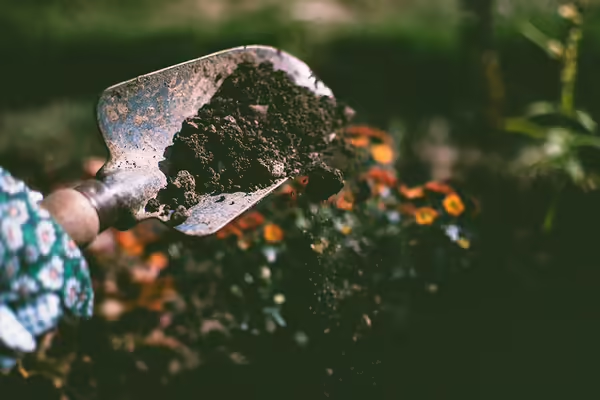
URBANA, Ill. – Over the years, there has been a growing demand for organic-based fertilizers to use in the garden and landscaping. There are of course ways to manufacture these organic fertilizers, but what if we could use a byproduct of the manufacture of a different product? It is an efficient use of our natural resources and perhaps even creates a sustainable source.
“This has given rise to many different types of organic fertilizers appearing on the market that are the “leftovers” of some other type of industry,” says Chris Enroth, University of Illinois Extension horticulture educator.
For instance, corn gluten meal is an organic fertilizer that is a byproduct of the corn milling industry. Milorganite is a hybridized trade name of an organic fertilizer. “Mil” means Milwaukee, “orga” shortened from organic, and “nite” for nitrogen. Though I was originally taught “nite” came from the term “night soil” which is human waste. Milorganite fertilizer is made of biosolids from treated sewer sludge from the Milwaukee Metropolitan Sewerage District.
And then there is fish emulsion. Fish emulsion is the leftover liquid from the fish meal and fish oil industry.
To get a picture of fish emulsion think back to or look up the Saturday Night Live video of Dan Aykroyd hawking his Super Bass-o-Matic ‘76. With the help of a blender, some water, and a dead fish, Aykroyd made a fish emulsion.
“Of course, some other items go into processing fish emulsion, like straining out solid pieces and adjusting the pH so the product doesn’t spoil in the container, but it is for the most part liquified fish,” Enroth says.
There are many unverified claims on the magic of fish emulsion. Some will say to soak seeds in this product for better germination rates. Initial studies show this not to be true. Others note to use this as a foliar spray for plants to absorb nutrients directly into their leaf tissue for big yields. Again, studies of sweet peppers show no difference in yield when using fish emulsion foliar sprays.
Fish emulsion has been shown to be effective as a fertilizer. While nutrient ratios may vary, a typical fish emulsion may have nitrogen (N), phosphorus (P), and potassium (K) rates of 2-4-1 and the micronutrients calcium, magnesium, sulfur, chlorine, and sodium.
A possible benefit of fish emulsion, and many of the organic-based fertilizers, is that they offer protein to feed our soil microorganisms, which may help to build a more robust soil food web resulting in improved plant health for the long term.
Then, there is the issue of the odor.
“A liquid fish emulsion smells, well like blended up fish,” Enroth says. “I now avoid using it on houseplants, after applying it once and booting the plants outside after a day of playing the game ‘Find the Smell!’ "
Outdoors the odor is of little consequence. However, the raccoons took a very keen interest in why I was hiding dead fish in my outside containers and proceeded to dig in each pot on my patio. While this is not established research, over time several people have called the Illinois Extension office about raccoons digging in pots. After investigation, there does seem to be a trend of fish emulsion fertilizer use and mischievous raccoons.
SOURCE: Chris Enroth, Horticulture Educator, Illinois Extension.
ABOUT EXTENSION: Illinois Extension, the public outreach and engagement arm of the University of Illinois, translates research-based knowledge into actionable insights and strategies that enable Illinois businesses, families, and community leaders to solve problems, adapt to changes and opportunities, make informed decisions, and carry technical advancements forward into practice.